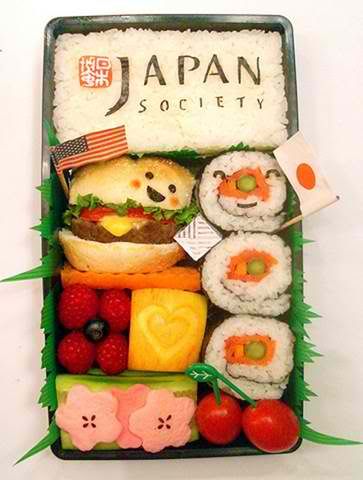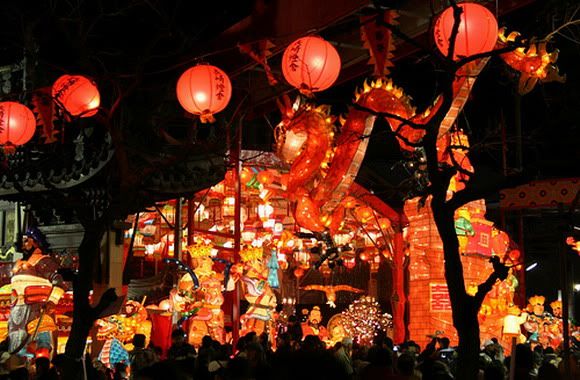
O-Shogatsu is the celebration of the New Year and is the most important holiday in Japan.
In Japan people give some gift in a lot of occasion. Oseibo is the most common issue as a year-end gift. They give it to their superiors, customers and teachers to express appreciation for the special services they have extended to them.
Bonenkai is a party usually held among office colleagues and bosses. Bonenkai litarelly means a "Forget-the-year party" to forget the unpleasant memories of the passing year and to welcome the New Year with a fresh and serene mind. At the party, bosses usually tell their stuff to be Breiko (to forget their position and be impolite!), because the relationship in the workplace in Japan is a bit strict. For example, Japanese language has various expression for each word. One is called a polite word and another is called a modest word. People use these words in formal situation such as in a workplace.
Before the New Year, Japanese people clean their houses from top to bottom. Then they put up New Year's decorations, especially Kadomatsu which are made from bamboo, pine branches and strips of white folded paper. When the house is clean and decorated, then everybody gets busy preparing New Year's food.
One of the most important New Year's foods is Mochi. In their neighborhood, they have a mochi-tsuki party every year and make their own mochi. They gather on a Sunday morning in an empty lot. In one corner of the lot, someone starts to cook rice on an open fire. When the rice is cooked, it is placed in a special wooden dish and is pounded with a big wooden hammer. All of the neighbors take turns pounding until the rice mixture becomes a big ball of dough. Then everyone gets involved rolling small mochi balls which are eaten with different kinds of sweet or salty sauces and toppings.

This picture as seen above, shows all of the neighbors taking turns to pound the rice mixture until it becomes a big ball of dough, then everyone gets involved in rolling small mochi balls which are eaten with different kinds of sweet or salty sauces and toppings.

This picture as shown above is called the ozoni, a miso soup which are usually served with mochi. There are a few different versions of ozoni, but it’s the traditional first food people eat on New Years, after toasting sake in the morning. This picture shows a dish that contains about 20-30 different items of food in a 3-tier set of boxes which are eaten during New Year, called osechi-ryori.
This picture shows a dish that contains about 20-30 different items of food in a 3-tier set of boxes which are eaten during New Year, called osechi-ryori.
Omisoka is the day of New Year’s Eve. Since the New Year is the biggest event in Japan, people celebrate the Eve as well. People work so hard to prepare the New Year around one or two weeks such as cleaning (like spring cleaning in here) and shopping. The reason people do the cleaning in the middle of winter is to get rid of the dirty of the passing year and to welcome the New Year with a fresh and serene mind.
And on Omisoka, with preparing the New Year’s special dishes called Osechi-ryori.
Japanese people spend time at home with their family. They eat, play games, and watch special New Year's shows on television.
People eat Toshikoshi-soba at night and stay up till midnight to listen to the 108 chimes of a nearby temple bell. Toshikoshi-soba is a bowl of hot brown noodles in broth. The noodle is a homophone for a word that means “being close” and therefore signifies the approach of the New Year. The 108 chimes called Joya-no-kane, rings out the old year and rings in the New Year. It is supposed to release people from the 108 worldly sins.
 Although Christmas cards exist in Japan, most people send traditional New Year's postcards called Nengajyo. People send a lot of greeting cards to their relatives, friends, business acquaintances and customers to wish them a happy New Year. This custom is very nice because if you post your cards by a special date in December, the post office will deliver them all bright and early on the 1st of January. When you wake up on that day, your mailbox is full of happy wishes for you. This is a good opportunity to keep in touch with old friends and acquaintances.
Although Christmas cards exist in Japan, most people send traditional New Year's postcards called Nengajyo. People send a lot of greeting cards to their relatives, friends, business acquaintances and customers to wish them a happy New Year. This custom is very nice because if you post your cards by a special date in December, the post office will deliver them all bright and early on the 1st of January. When you wake up on that day, your mailbox is full of happy wishes for you. This is a good opportunity to keep in touch with old friends and acquaintances.
The shrines all over Japan are packed with people from the New Year’s Day to January 3rd. This day is called the Hatsumoude, after New Year's breakfast, people get dressed up in their Kimonos to go to the shrine or to the temple to pray for safety, happiness and long lives of the family. The Japanese would also buy a good luck talisman called Omamorito be kept as a protection from illness, accidents and disasters. This is the first temple visit of the year and is very important. After praying, people visit the temple market. All around the temple grounds, there are booths and little shops set up where you can buy traditional foods, cotton candy, balloons, toys and temple souvenirs.

 This picture shows the temple market that the Japanese would visit after praying, where you can buy traditional foods, cotton candy, balloons, toys and temple souvenirs.
This picture shows the temple market that the Japanese would visit after praying, where you can buy traditional foods, cotton candy, balloons, toys and temple souvenirs.
Daruma can also be purchased at the temple market. These are papier-mache figures that come in many sizes and that have two big white eye spots. Daruma are used for making New Year's resolutions. With a magic marker, the buyer blackens in one of the eyes while making a resolution. If, during the year, they accomplish their wish, they can blacken the other eye to show they succeeded. At the end of the year, people return used darumas to the temple for a special burning and buy new ones.

This is a drawing of a daruma purchased at the temple market.
After visiting the temple, Japanese people return to their homes to eat, play traditional games and just relax. Children fly kites and play with wooden tops. Adults play poetry games and pratice calligraphy.

The picture above shows a drawing of a traditional game played during the Japanese’s New Year called the Karuta Game.

This picture above shows a drawing of the Japanese traditional Shodo Calligraphy which the adults would normally do during the New Year.
Probably the most important holiday tradition for Japanese children is O-toshidama. These are little envelopes containing money that children get from their parents and other relatives. Even though the Japanese holidays are very different from holidays in America and Europe, since children are expected to be good all year in order to get O-toshidama, in a way, it is just like Christmas. It is the busiest season for toy shops to attract children to spend their Otoshidama.
Back to Top. | 5:47 AM





